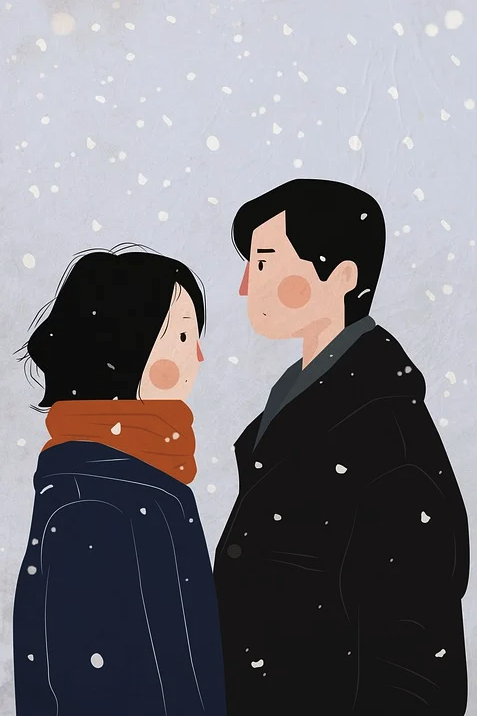In my last post I wrote about developing a basic mindfulness practice. Here I will tell you about a second practice. This one is also easy. And it is also very powerful.
This one is loving-kindness. The Buddha taught this practice over 2500 years ago. In recent decades it has been reformulated by many teachers. These have been Buddhists and non-Buddhists. The reason so many teachers offer this meditation is because it is so meaningful in people’s lives.
In my own life it has done a great deal to help. First, it helped when I was in my 20s and was first learning to meditate.

I had a tough break-up and found myself very upset with my ex. Then I included her in my loving-kindness meditation and very quickly found my feelings for her becoming less and less negative. Within a couple months I was truly over the pain and upset.
After that I was able to see her for the good that she brought into my life. And we are friends to this day.
It was also a big part of my depression self-care. The first stage of the meditation directs us to wish ourselves happiness. This may seem odd at first, but that was hard for me when I was depressed. When I visualized the practice, I saw myself cultivating love and warmth and offering it back to myself. This increased my “bubble” of love and warmth. Then I offered that back to myself. And again and again this continued.
After a while I could literally “feel warm and fuzzy” after just a few minutes of this meditation.
Science backs it up too
If you’re looking for something more than “warm and fuzzy,” you might appreciate the science behind loving-kindness meditation. In 2008, Barbara Frederickson and her colleagues found that just seven weeks of loving-kindness practice increased a range of positive emotions in people. These meditators developed greater life satisfaction and reduced depressive symptoms.
A study done by Tonelli and colleagues in 2014 found that loving-kindness meditation could even bring instant relief to migraine sufferers. Chronic lower back pain was found to be reduced in a study by Carson and colleagues in 2005. And a 2013 study by Kearney and colleague showed that loving-kindness could significantly reduce depression and PTSD symptoms among veterans.
And that is just scratching the surface.
Practicing Loving-Kindness

As always, begin in an upright but comfortable position. You can sit in an office chair or dining room chair. Or try sitting cross-legged on a meditation cushion. Hands should be resting on your legs or one on top of the other. Breathing should be natural and relaxed. You can take a couple deep breaths to calm and center yourself to begin.
Before beginning, think of the 4 people you’ll have in the meditation: yourself, a good friend, a neutral person, and a difficult person. Ideally, the good friend is not a romantic interest as that can lead to a certain kind of day-dreaming. Often, a favorite teacher, past or present, is ideal as the good friend. A good neutral person is someone you really have no meaningful emotions toward. Think of the grocery store clerk you’ve seen a couple times but never really interacted with, or a bus driver, or a colleague you haven’t had the chance to get to know. Lastly, the difficult person can be anyone who has directly been difficult in your life. Sometimes you can’t choose the most difficult person, because this brings up too much pain.
One you have your people in mind you are ready to start.
Then, with your eyes closed, begin wishing yourself well. I learned to repeat the phrase, “may I be well, may I be happy, may I be free from suffering,” over and over. You can choose your own words. Just be sure that they are short and direct and easy to repeat. As you meditate, see that you really mean it. You really do wish yourself wellness, happiness, and freedom from suffering.
Next, invite your good friend into your meditation. You might visualize them sitting in front of you. Try using the phrase, “may you be well, may you be happy, may you be free from suffering.” You might visualize this person’s face smiling at you as you wish them well. And you might visualize them also wishing you well, as they naturally would.
Third, invite in a neutral person. You should be able to visualize this person’s face in front of you. Extend the phrase to them, “may you be well, may you be happy, may you be free from suffering.” See them smile at you and perhaps reciprocate the kind wishes.
Fourth, that difficult person. Same practice. Invite them to sit with you. You might visualize your good friend and the neutral person there with you. They’re offering emotional back-up, so to speak. Everyone offers the phrase, “may you be well, may you be happy, may you be free from suffering.” Here I put extra emphasis on “you.” This helps me remember that even difficult people want to be happy. They deserve to be happy.
Finally, imagine extending out the bubble of loving-kindness in all directions. Wish happiness to the people in the building with you. The squirrels and birds outside. The people driving by. Pets in the neighborhood. All of the people in your town or city. Then the whole state, country, continent, world. Hold everyone and everything in this moment of universal well-wishing.
Here are a couple videos to help guide you through the practice. They’re short at just 10 minutes. But like the mindfulness meditation, this can be difficult at first.
https://www.youtube.com/watch?v=sz7cpV7ERsM&ab_channel=UNHHealth%26Wellness
https://www.youtube.com/watch?v=1eLKEuJkggw&ab_channel=LivingBetter
Do your best to stay with it and over time it will become easy and you can seek out longer versions of the meditation.
Happy meditating. And remember, may you be well. May you be happy. May you be free from suffering.
 Justin Whitaker, Ph.D., holds a doctorate in Buddhist ethics from the University of London. He has given lectures, and taught Buddhist studies and Philosophy at Oxford University, the University of Hong Kong, the University of Montana, and at Antioch University’s intensive study-abroad program in India. He is a certified meditation teacher, a regular contributor to Patheos.com, and Senior Correspondent for Buddhistdoor Global. He lives in Missoula with his family.
Justin Whitaker, Ph.D., holds a doctorate in Buddhist ethics from the University of London. He has given lectures, and taught Buddhist studies and Philosophy at Oxford University, the University of Hong Kong, the University of Montana, and at Antioch University’s intensive study-abroad program in India. He is a certified meditation teacher, a regular contributor to Patheos.com, and Senior Correspondent for Buddhistdoor Global. He lives in Missoula with his family.
